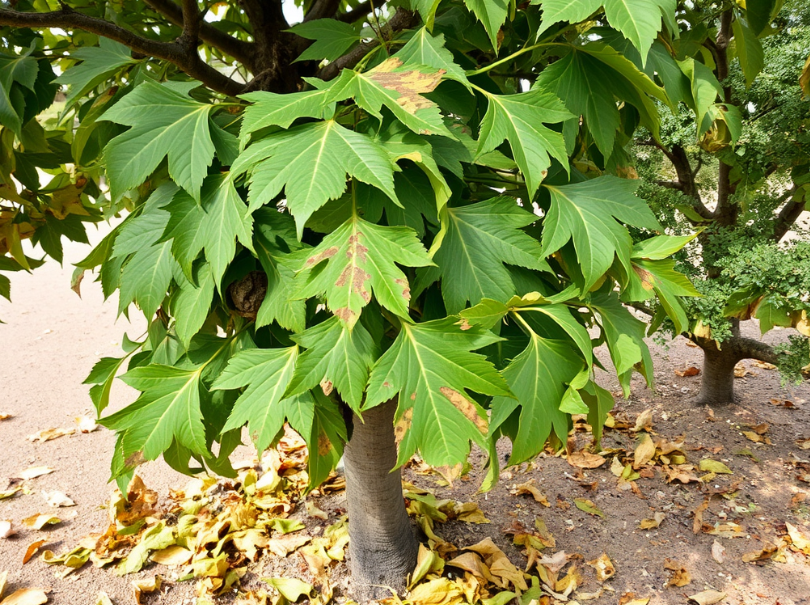Trees add beauty along with shade and value to properties in Chandler, Arizona. As with other living things, however sometimes trees develop diseases that weaken them and affect their health. A well-informed understanding of common tree diseases in Chandler along with how to treat them may help homeowners and property managers guard their trees.
1. Why Tree Diseases Are a Concern
Tree diseases spread rapidly through infected trees while simultaneously harming the tree structure and all surrounding areas. Fungi together with bacteria and environmental stress serve as the main causes of diseases in Chandler. Proper Arizona tree care must take place to stop diseases and keep trees vigorous.
2. Common Tree Diseases in Chandler
A. Anthracnose
Anthracnose serves as a fungal infection in trees which affects sycamores alongside oaks and ash. The fungal contamination produces brown leaf markings in addition to causing leaf curling and premature foliage loss.

Treatment
- The spread of infection will stop after cutting away infected branches.
- Fallen leaves should be removed with rake work to decrease fungal spore populations.
- Treatment with fungicide should be used in case of serious fungal infections.
B. Texas Root Rot
One of the most detrimental tree diseases in Chandler spreads through Texas root rot which destroys citrus trees together with ash trees. Texas root rot infects roots which results in the development of yellowing leaves and tree wilting before killing the tree suddenly.

Treatment
- Proper Arizona tree care practices act as the only available defense against the disease.
- The soil drainage needs improvement while you should prevent waterlogging conditions.
- Select disease-resistant tree species when you make your choice of tree types during planting.
C. Sooty Mold
Sooty mold infects tree leaves along with branches by developing black sticky formations on their surfaces. The appearance of sooty mold occurs primarily because insects produce honeydew which allows this fungus to prosper.

Treatment
- Removing aphid and scale insect populations requires proper pest control methods.
- A diluted solution of water and mild soap serves to clean leaves adequately.
- Thoroughly cut off branches whenever severe mold spreads through the tree.
D. Powdery Mildew
The fungal infection in trees which causes powdery mildew appears as white or gray powder covering tree leaves. The growth of young trees will decrease along with an overall weakening of their structure because of this condition.

Treatment
- Cross pruning branches help trees receive better airflow.
- Apply irrigation only to the soil instead of leaves.
- Use a fungicide if needed.
E. Bacterial Leaf Scorch
The blockage of water flow in trees because of bacterial leaf scorch results in brown leaf edges and premature leaf drop. Both oak trees and sycamores tend to become infected in the city of Chandler.

Treatment
- Proper irrigation of trees should focus on dry periods especially.
- The base of the plants should receive mulching to keep the soil waterlogged.
- Slowing the path of infection can be achieved through the removal of affected branches.
3. Tree Disease Treatment Options
Fast intervention becomes crucial whenever you detect signs of tree disease to avoid harmful damage. Various treatments exist for managing tree diseases as follows:
A. Proper Pruning
Proper pruning allows both disease branch removal and better air circulation to decrease fungal outbreaks. Clean tools should always be used when dealing with tree diseases since their transmission can occur through poorly sanitized tools.
B. Fungicides and Insecticides
The application of fungicides on trees helps to control and stop fungal diseases from continuing. Insects contributing to the issue may require use of insecticides for control.
C. Deep Watering and Soil Care
Healthy trees resist diseases better. Receiving deep water retains roots strong while applying organic mulch helps enhance soil conditions.
D. Professional Disease and Pest Control
Plant diseases require professional assistance that should be contacted when the condition becomes severe. The diagnosis and optimal treatment for tree diseases come from qualified pest control experts who you should call for assistance when needed.
4. Preventing Tree Diseases in Chandler
Treatment becomes necessary only after the preventive measures fail to stop the problem. These Arizona guidelines for tree maintenance will help maintain tree health:
- Choose disease-resistant tree species.
- Water properly, avoiding overwatering.
- Regular pruning of trees helps to provide good airflow.
- Trees should be checked for early indications of illness.
Conclusion
Professional knowledge about treating common tree diseases in Chandler will help protect your trees from substantial harm. The correct care combined with swift tree disease treatment measures produces significant positive outcomes regardless of the fungal infections in trees or bacterial diseases or pest problems affecting the trees. The presence of disease indicators should trigger you to contact expert services, like our Tree Health Assessment Service, which will manage your tree maladies and pest infestations. The maintenance of healthy trees simultaneously brings beauty to your property while benefiting the surroundings with additional greener areas.
